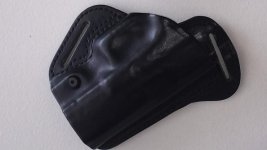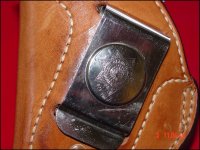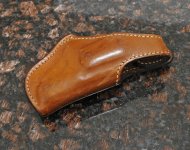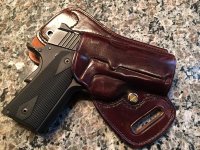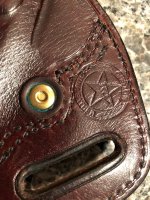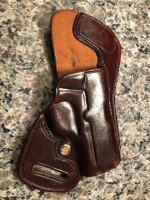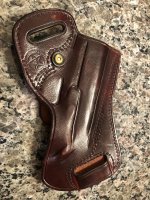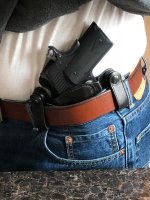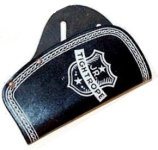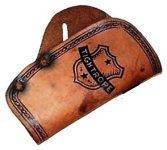An holstorical catchup on small-of-back holsters, none of which will much help the OP

.
The style originated with a television show of the 1950s called Tightrope; here are the two basic styles that were marketed as capgun holsters (whoops, I doubled up on the version with the cylinder pocket and left out the one without it):
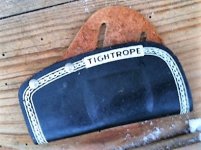
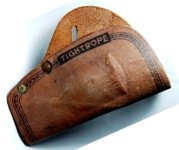
Rick Gallagher at Jackass (he told me personally he named the company after himself) now known as Galco, later claimed to have 'invented' the style. At the time the TV show appeared in 1959 he was 14 (b. 1945) and living in a Chicago suburb (he's a Capricorn like me, poor B.)
Worn properly it is simply an extreme tilt (60 degrees positive) below the kidney; no sweeping of the body takes place when the shooter unconsciously keeps the muzzle headed for the target.
Their purpose is extreme concealment from an open jacket. No maker pretends they won't print if one bends forward at the waist; when wearing one, one simply doesn't do that, because of knowing what will happen. Comfort -- might be worth the reduction in this for the right operative; otherwise, worn at the kidney at about 5:00 it's simply one position back from 4:00 with the FBI standard of 25 degrees positive; no reason for it to be uncomfortable in anything but bucket seats on a small sports car (so Bond used a shoulder holster).
Posters who have said it is not a dangerous position are, of course, correct; and it was nice to see at least some anecdotal evidence of that in one post

.
I've designed many of them and during decades around the end of the 20th century they sold pretty well for their makers (I was only a designer then). Surprisingly well.
 ] #1
] #1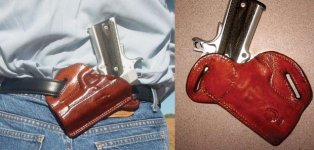 #2
#2
